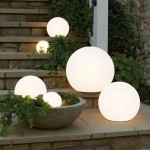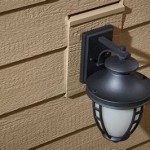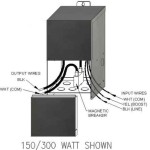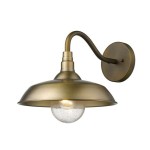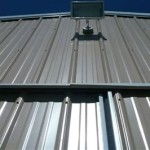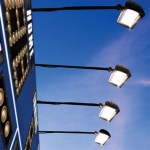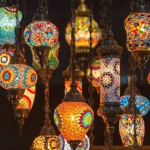Decorative Outdoor Lights For Trees In Winter
Winter presents a unique opportunity to transform outdoor spaces into captivating and enchanting landscapes. As the days grow shorter and the natural colors of foliage fade, the strategic use of decorative outdoor lights can breathe life and warmth into trees, creating a visually appealing ambiance that combats the winter blues. This article explores various methods and considerations for illuminating trees with decorative lights during the winter months, focusing on safety, aesthetics, and practicality.
Selecting the appropriate type of lighting is a crucial first step. Factors such as energy efficiency, durability, and the overall aesthetic desired will influence the decision. Incandescent lights, while traditionally popular, are less energy-efficient and have a shorter lifespan compared to other options. Light Emitting Diodes (LEDs) have emerged as the preferred choice for many due to their energy efficiency, long lifespan, and cool operating temperature, reducing the risk of fire hazards, especially when in contact with dry leaves or branches. Furthermore, LEDs are available in a wide array of colors and styles, providing ample creative options.
The color of the lights significantly contributes to the overall atmosphere. Warm white lights tend to evoke a sense of cozy comfort and are often used to mimic the soft glow of natural light. Cool white lights create a more modern and crisp appearance, which can complement contemporary architectural styles. Colored lights, such as red, green, or blue, can add a festive touch, particularly during the holiday season. However, restraint is advisable when using colored lights to prevent an overwhelming or garish effect. Individual preference plays a significant role, but considering the existing landscape and architectural style can help in making an informed decision.
Beyond the type and color of the lights, the method of illumination is paramount. Techniques such as outlining, spotlighting, and wrapping can achieve different effects. Outlining involves tracing the major branches of a tree with strings of lights, emphasizing its natural form. Spotlighting entails placing lights at the base of the tree to project light upwards, highlighting the trunk and canopy. Wrapping involves coiling strings of lights around the trunk and branches, creating a dense and immersive illuminated effect. The choice of method depends on the tree's size, shape, and desired visual outcome. Careful planning and execution are essential to achieve the intended effect and avoid an unkempt or haphazard appearance.
Safety Considerations for Outdoor Lighting
Safety is the foremost concern when installing outdoor lighting, particularly during winter when weather conditions can be unpredictable. All electrical connections must be weatherproofed to prevent short circuits and electrical shocks. Extension cords used outdoors should be specifically rated for outdoor use and designed to withstand harsh weather conditions. Regularly inspect the lights and wiring for any signs of damage, such as frayed wires or cracked sockets, and promptly replace any damaged components.
It is also vital to ensure that the lighting is installed in a manner that does not pose a tripping hazard. Cords should be properly secured to prevent them from becoming entangled in foot traffic areas. Furthermore, avoid overloading electrical circuits by connecting too many strings of lights to a single outlet. Consult a qualified electrician to assess the electrical load capacity and ensure that the installation meets all applicable safety codes.
When working with ladders or other elevated equipment, exercise extreme caution. Ensure that the ladder is stable and placed on a level surface. Avoid working in wet or icy conditions, and consider having a second person assist during the installation process. Power lines pose a significant hazard, so maintain a safe distance from any overhead power lines when handling lighting equipment. Prioritizing safety minimizes the risk of accidents and ensures a worry-free enjoyment of the illuminated landscape.
Techniques for Highlighting Tree Features
Effective tree lighting goes beyond simply stringing lights around branches. Strategic placement of lights can accentuate specific features of the tree, creating a more dynamic and visually interesting display. For example, spotlighting can highlight the texture of the bark, particularly on trees with distinctive bark patterns. Up-lighting can emphasize the branching structure, creating dramatic silhouettes against the night sky.
Deciduous trees, which shed their leaves in winter, offer a unique opportunity to showcase their branch structure. Outlining the major branches with lights can create a delicate and intricate network of light, highlighting the tree's skeletal form. Evergreen trees, on the other hand, can be wrapped with lights to create a dense and impactful display of light. Experimenting with different techniques and light placements can reveal the unique beauty of each tree.
Consider using different colors of light to emphasize different features. For example, warm white lights can be used to highlight the trunk and lower branches, while cool white lights can be used to illuminate the upper canopy. This creates a layered effect that adds depth and visual interest to the display. The key is to avoid overdoing it and to maintain a sense of balance and harmony in the overall lighting design.
Selecting Appropriate Lighting Fixtures and Styles
The market offers a wide array of lighting fixtures suitable for outdoor tree illumination. String lights, spotlights, floodlights, and even decorative lanterns can be used to create different effects. String lights are versatile and relatively easy to install, making them a popular choice for outlining branches and wrapping trunks. Spotlights provide focused illumination and are ideal for highlighting specific features of the tree.
Floodlights provide broader illumination and can be used to bathe the entire tree in light. Decorative lanterns add a touch of elegance and can be hung from branches to create a whimsical effect. The choice of fixture depends on the desired aesthetic and the specific characteristics of the tree. Consider the size and shape of the tree, as well as its location in the landscape, when selecting lighting fixtures.
In addition to the type of fixture, the style of the fixture is also important. Choose fixtures that complement the architectural style of the home and the overall aesthetic of the landscape. For example, traditional homes may benefit from more classic and elegant lighting fixtures, while modern homes may be better suited to sleek and minimalist designs. Pay attention to the materials and finishes of the fixtures to ensure that they blend seamlessly with the surrounding environment.
Timer systems and smart lighting controls can enhance the convenience and efficiency of outdoor tree lighting. Timers allow for automated operation, turning the lights on and off at predetermined times. This eliminates the need to manually control the lights, saving time and energy. Smart lighting controls offer even greater flexibility, allowing users to control the lights remotely via smartphone or tablet.
Smart lighting systems often include features such as dimming, color changing, and scheduling, providing a high degree of customization. They can also be integrated with other smart home devices, such as security systems and thermostats, creating a cohesive and automated home environment. Investing in timer systems or smart lighting controls can significantly enhance the enjoyability and functionality of outdoor tree lighting.
Proper maintenance is crucial for extending the lifespan and maintaining the appearance of outdoor tree lighting. Regularly inspect the lights and wiring for any signs of damage, such as cracks, frays, or corrosion. Clean the fixtures regularly to remove dirt, dust, and debris, which can reduce the brightness of the lights. Replace any burned-out bulbs promptly to maintain a consistent level of illumination.
During periods of inactivity, such as the spring and summer months, store the lights properly to protect them from the elements. Disconnect the lights, coil the cords neatly, and store them in a dry and secure location. With proper care and maintenance, outdoor tree lighting can provide years of enjoyment, transforming outdoor spaces into enchanting winter wonderlands. The key to successful decorative outdoor lighting for trees in winter lies in careful planning, thoughtful execution, and a commitment to safety and maintenance. By considering the various factors outlined in this article, individuals can create stunning illuminated landscapes that enhance the beauty of their homes and gardens throughout the winter season.

Fantastic Holiday Lights Display Dream Garden Outdoor Gardens

Outdoor Garden Decorative Lights

17 Outdoor Lights For A Beautiful And Bright Display

Outdoor Lights Decoration Ideas Home To Z Decorating With Decorations

6 Creative Ways To Decorate Your Outdoor Trees This Big Star Lights

Buy Outdoor 3d Illuminated Twinkling Light Trees The Worm That Turned Revitalising Your Space

Light Ideas For Outdoor Trees

Pick The Right Lights For Your Home Lowe S

Pretty Lights Outdoor Tree Lighting Decorating With

Outdoor Decorating Ideas
